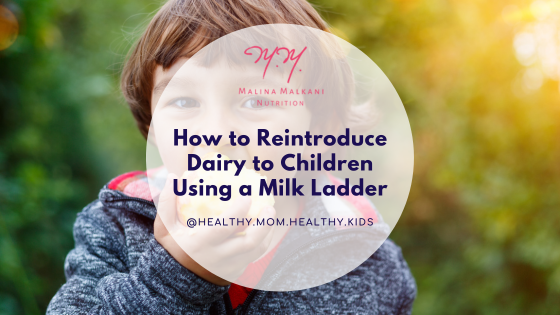Why Food Sensitivity Tests (Like IgG Panel Tests) Might Be Doing More Harm Than Good
As a pediatric dietitian and a parent myself, I understand how overwhelming it can feel when your child is struggling with tummy troubles, rashes, chronic congestion, or just seems “off” after eating. You want answers—and fast.
It’s no wonder that food sensitivity tests (especially the IgG blood tests you can order online, through a wellness influencer, or at a private clinic) have become so popular. They promise to identify which foods are making your child sick. You get a report with colorful charts and a list of “problem” foods to avoid. It feels like a concrete solution.
But here’s the hard truth: those tests don’t do what they claim to do. And worse, they can lead families down a path of unnecessary food restrictions, stress, and even nutritional deficiencies and disordered eating as a result.
My goal in this post is to break down what IgG food sensitivity tests are, how they work, and whether or not they are helpful. Let’s jump in!
What Are IgG Food Sensitivity Tests?
IgG food sensitivity tests attempt to work by measuring levels of Immunoglobulin G (IgG) antibodies in the blood in response to specific foods. The idea is that high IgG levels mean your body is “reacting” to a food, and that the food must be causing symptoms like bloating, eczema, headaches, or fatigue.
Sounds reasonable, right? But here’s the kicker: IgG can be a normal immune response. IgG in the blood usually means your body has been exposed to a food and tolerates it, not that it’s a problem. In fact, people with the most diverse diets often have higher IgG levels across a wide range of foods. This is a sign of exposure, not necessarily inflammation or intolerance.
How are Food Sensitivities Different Than Food Allergies?
While many people often confuse a food sensitivity with a food allergy and may use the terms interchangeably, a food sensitivity is a nonspecific term and not a synonym for food allergy.
According to the Academy of Allergy, Asthma, and Immunology, “with a food allergy, the body is making an immune response to the food, and this can be dangerous. With an intolerance or sensitivity, the body may just not be processing or digesting the food appropriately and this is not actually dangerous (although it can obviously be uncomfortable).”
IgE food allergies involve an immediate immune response mediated by immunoglobulin E (IgE). When someone with an IgE-mediated allergy eats a trigger food, their immune system reacts within minutes to a few hours, often causing symptoms like hives, swelling, vomiting, difficulty breathing, or even life-threatening anaphylaxis.
In contrast, IgG food sensitivities involve immunoglobulin G (IgG) antibodies. The presence of IgG is likely a normal response of the immune system to the food exposure. In fact, higher levels of IgG4 to foods may actually be associated with tolerance to those foods.
Another important difference is diagnostic reliability. Clinical history and oral food challenges under medical supervision are the gold standard of diagnosis for IgE-mediated food allergies, and in some cases, skin prick tests and serum IgE blood tests may be able to help support diagnosis as well.
On the other hand, IgG food sensitivity testing has never been scientifically proven to be able to accomplish what it reports to do. The scientific studies that are provided to support the use of this test are often out of date, in non-reputable journals, and many have not even used the IgG test in question.
In short, IgE food allergies are immediate and potentially severe, while IgG food sensitivities are delayed, usually less serious, and more challenging to diagnose with certainty.
Why are Food Sensitivity Tests Harmful?
You might be thinking, “Okay, maybe the science supporting IgG testing is a little iffy. But what’s the worst that can happen if we just avoid the foods on the list?”
Here’s the problem: these tests often come back with long lists of foods to avoid—sometimes 20, 30, even 50+ items, including nutritious staples like eggs, dairy, wheat, or multiple fruits and vegetables. When parents start cutting those foods out of a child’s diet, especially without proper guidance from a registered dietitian or allergist, it can have serious consequences, including the following:
Nutritional deficiencies: Kids have high nutrient needs, especially during periods of rapid growth. Removing entire food groups without sound science supporting the elimination puts kids at risk for key nutrient deficiencies, like calcium, protein, iron, and fiber, during important phases of growth and development.
Disordered eating: Labeling foods as “bad” or “harmful” (based on faulty test results) can cause fear around food, anxiety at mealtimes, and can even contribute to extreme picky eating or restrictive eating patterns—especially for children who are already selective eaters.
Family stress: Food restrictions can make mealtimes feel exhausting, travel difficult, and social events stressful. It’s tough enough feeding kids without adding extra, unnecessary limitations.
Missed real diagnoses: Relying on IgG tests might delay proper evaluation for real issues like celiac disease, food allergies, or gastrointestinal disorders.
How Can You Help Your Child with Possible Food Sensitivities?
I’ve worked with many families who come in with a binder full of test results and a list of “no-no” foods, feeling frustrated, hopeless, and still not seeing any improvement in their child’s symptoms.
If your child is having symptoms that you think might be food-related, here’s what I recommend:
Talk to your pediatrician or a credentialed pediatric dietitian: Partner with them to look at the big picture together—your child’s symptoms, growth patterns, medical history, and diet.
Keep a symptom tracker + food diary: When you track diet and symptoms together, patterns often emerge that can help identify possible triggers, without jumping to conclusions.
Use evidence-based testing when needed: For example, clinical history coupled with diagnostic testing for celiac disease, oral food challenges for true food allergies, or breath tests for lactose intolerance can all be helpful in the right context.
Try a supervised elimination and reintroduction: If a food intolerance is suspected (like lactose or FODMAPs), a short, targeted trial of removing and then reintroducing the food under professional guidance can be very effective—and safe.
Can gut dysbiosis lead to food sensitivities?
Emerging research suggests that an imbalance in gut bacteria, known as gut dysbiosis, may play a role in the development of food sensitivities. While the exact mechanisms aren't fully understood, we do know that gut microbes can change how our bodies react to certain food components, by either reducing or increasing how likely a food is to trigger a body response.
When the gut isn’t working properly—such as when the intestinal barrier is weakened—it can allow substances to pass through that normally wouldn’t, potentially leading to sensitivities. For example, some children are more sensitive to lactose after completing an antibiotic or having a gastrointestinal infection. The good news is that it is usually temporary and resolves once the gut microbiome has restored itself.
Diet also plays a part, as undigested food particles can feed unhealthy gut bacteria and affect gut health. Supporting a healthy gut environment may help reduce the risk of developing food sensitivities. Here are a few of my top tips as a pediatric dietitian to support healthy bacteria growth in kids:
Offer a variety of fiber-rich fruits and vegetables – These act as prebiotics, feeding the good bacteria in the gut.
Include fermented foods when appropriate – Yogurt with live cultures, kefir, and sauerkraut can help replenish beneficial bacteria.
Limit added sugars and highly processed foods – These can disrupt the balance of gut microbes.
Encourage outdoor play and exposure to nature – Contact with natural environments may help diversify the gut microbiome.
Consider a child-friendly probiotic supplement – Especially after a round of antibiotics, but always check with your healthcare provider first.
Stay hydrated – Drinking enough water helps maintain gut function and supports digestion.
Final Thoughts: Trust Your Gut, But Use Good Science
I know that as parents, we’re constantly trying to do what’s best for our kids. When we see them in pain or discomfort, it’s natural to want clear answers. But quick-fix solutions like IgG food sensitivity tests can do more harm than good.
If you’ve already done one of these tests, please don’t feel guilty! Many loving, well-intentioned parents have been misled by the clever marketing. But knowing more can help us all make more informed choices and get our children the support they really need.
Let’s ditch the pseudoscience and focus on what actually works. Your child deserves nothing less.
If you’re just getting your baby started with solids and are interested in learning more about how and when to integrate foods into your baby's diet, as well as evidence-based strategies to help reduce the risk of food allergies during infancy, check out my new baby-led feeding + food allergy prevention guide and cookbook!
And if you're looking for personalized nutrition support for your babies or kids, I am currently accepting new clients in my virtual private practice.
Thanks for reading!









